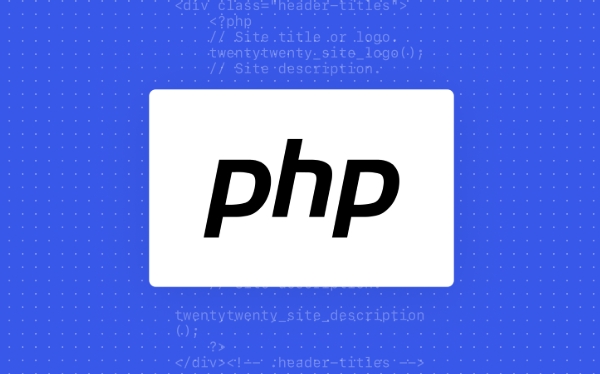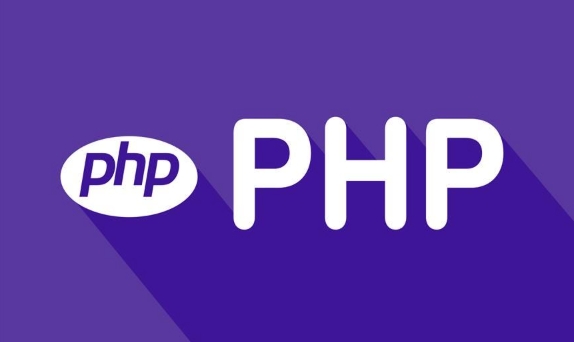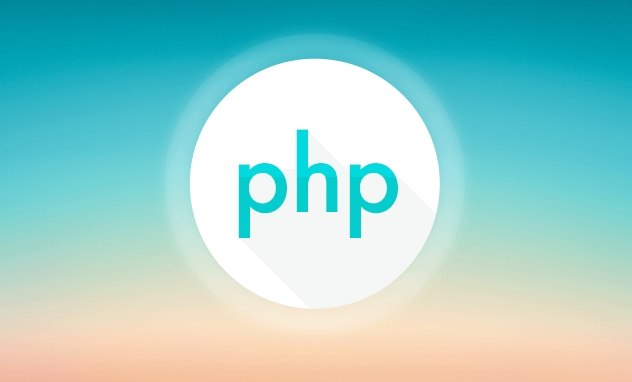 Backend Development
Backend Development
 PHP Tutorial
PHP Tutorial
 Deconstructing the Dangers: Why Modern PHP Developers Avoid $_REQUEST
Deconstructing the Dangers: Why Modern PHP Developers Avoid $_REQUEST
Deconstructing the Dangers: Why Modern PHP Developers Avoid $_REQUEST
Aug 02, 2025 pm 03:10 PM$_REQUEST is discouraged in modern PHP because it merges input from $_GET, $_POST, and $_COOKIE, creating source ambiguity that undermines security and predictability. 2. This ambiguity enables attacks such as cookie tampering, request method confusion, and CSRF bypass, as seen when a malicious cookie overrides expected POST data like CSRF tokens. 3. Debugging, testing, and maintaining code becomes harder since it’s unclear whether input originated from a form, URL, or cookie. 4. Best practices dictate using specific superglobals—$_GET for URL parameters, $_POST for form data, and $_COOKIE only when explicitly needed—to ensure clear, secure, and testable code. 5. Modern frameworks like Laravel and Symfony provide structured request objects and validation tools that promote explicit, safe input handling. 6. The core principle is that secure code requires knowing exactly where data comes from, so developers must be specific rather than relying on convenience-driven, ambiguous superglobals like $_REQUEST.

Using $_REQUEST in modern PHP development is widely discouraged — and for good reason. While it might seem convenient at first glance, relying on $_REQUEST introduces subtle but serious risks that conflict with secure, predictable, and maintainable coding practices. Let’s break down why experienced developers avoid it and what they use instead.

What Is $_REQUEST and How Does It Work?
$_REQUEST is a PHP superglobal array that collects data from multiple sources: $_GET, $_POST, and $_COOKIE (and sometimes $_FILES, depending on configuration). It merges input from these sources into a single array, allowing you to access user input without specifying where it came from.
For example:

echo $_REQUEST['username'];
This line could pull 'username' from a URL parameter, a form POST, or a cookie — with no distinction between them.
At first, this might look like a shortcut. But that very convenience is the root of its problems.

Security Risks: Ambiguity Enables Exploits
The biggest issue with $_REQUEST is source ambiguity — you can’t tell where the data originated. This opens the door to several attack vectors:
- Cookie tampering: Since
$_REQUESTincludes$_COOKIE, an attacker could set a malicious cookie that overrides form or URL data. - Request method confusion: A value sent via GET might be unintentionally overridden by a cookie with the same name, leading to logic flaws.
- CSRF and session fixation: If your app checks for a token in POST but
$_REQUESTfalls back to a stale or attacker-controlled cookie value, validation can be bypassed.
Imagine a login form expecting a CSRF token via POST:
if ($_REQUEST['csrf_token'] !== $_SESSION['token']) {
die('CSRF check failed');
}An attacker could set a csrf_token cookie with the correct value, then trick the user into submitting the form via GET (which doesn’t send POST data), causing $_REQUEST to fall back to the cookie. The check passes — but no real user intent was verified.
Predictability and Debugging Suffer
When you use $_REQUEST, it becomes harder to reason about your application flow. Did that value come from a form? A URL? A cookie the user didn’t even know existed?
This ambiguity leads to:
- Harder debugging: You can’t quickly trace where input originated.
- Unintended behavior: A cookie set during a previous session might silently alter current request handling.
- Testing complexity: Unit and integration tests must account for merged input sources, increasing setup overhead.
Explicit is better. If you expect data from a form, use $_POST. If it’s in the URL, use $_GET. This makes intent clear and behavior consistent.
Modern Alternatives and Best Practices
Instead of $_REQUEST, modern PHP applications follow stricter, safer patterns:
Use specific superglobals:
$_GETfor URL parameters$_POSTfor form submissions$_COOKIEwhen you explicitly need cookie data
Input abstraction layers: Many frameworks (like Laravel, Symfony) provide request objects that encapsulate input handling safely:
$request->get('username'); // Explicit, testable, and often filteredValidation and sanitization: Always validate and sanitize input, regardless of source. Tools like Symfony’s Validator or Laravel’s Form Requests make this easier.
Explicit data flow: Know where your data comes from. Don’t let the runtime decide for you.
- Better security
- More predictable behavior
- Easier testing and maintenance
Bottom Line: Clarity Over Convenience
$_REQUEST trades safety and clarity for minimal convenience. In modern PHP development, that’s a bad deal. By using specific superglobals and structured request handling, you gain:
Avoiding $_REQUEST isn’t just about following rules — it’s about writing code you can trust. And that’s what professional PHP development is all about.
Basically: if you don’t know where your data is coming from, you can’t secure it. So don’t guess. Be specific.
The above is the detailed content of Deconstructing the Dangers: Why Modern PHP Developers Avoid $_REQUEST. For more information, please follow other related articles on the PHP Chinese website!

Hot AI Tools

Undress AI Tool
Undress images for free

Undresser.AI Undress
AI-powered app for creating realistic nude photos

AI Clothes Remover
Online AI tool for removing clothes from photos.

Clothoff.io
AI clothes remover

Video Face Swap
Swap faces in any video effortlessly with our completely free AI face swap tool!

Hot Article

Hot Tools

Notepad++7.3.1
Easy-to-use and free code editor

SublimeText3 Chinese version
Chinese version, very easy to use

Zend Studio 13.0.1
Powerful PHP integrated development environment

Dreamweaver CS6
Visual web development tools

SublimeText3 Mac version
God-level code editing software (SublimeText3)
 PHP Variable Scope Explained
Jul 17, 2025 am 04:16 AM
PHP Variable Scope Explained
Jul 17, 2025 am 04:16 AM
Common problems and solutions for PHP variable scope include: 1. The global variable cannot be accessed within the function, and it needs to be passed in using the global keyword or parameter; 2. The static variable is declared with static, and it is only initialized once and the value is maintained between multiple calls; 3. Hyperglobal variables such as $_GET and $_POST can be used directly in any scope, but you need to pay attention to safe filtering; 4. Anonymous functions need to introduce parent scope variables through the use keyword, and when modifying external variables, you need to pass a reference. Mastering these rules can help avoid errors and improve code stability.
 How to handle File Uploads securely in PHP?
Jul 08, 2025 am 02:37 AM
How to handle File Uploads securely in PHP?
Jul 08, 2025 am 02:37 AM
To safely handle PHP file uploads, you need to verify the source and type, control the file name and path, set server restrictions, and process media files twice. 1. Verify the upload source to prevent CSRF through token and detect the real MIME type through finfo_file using whitelist control; 2. Rename the file to a random string and determine the extension to store it in a non-Web directory according to the detection type; 3. PHP configuration limits the upload size and temporary directory Nginx/Apache prohibits access to the upload directory; 4. The GD library resaves the pictures to clear potential malicious data.
 Commenting Out Code in PHP
Jul 18, 2025 am 04:57 AM
Commenting Out Code in PHP
Jul 18, 2025 am 04:57 AM
There are three common methods for PHP comment code: 1. Use // or # to block one line of code, and it is recommended to use //; 2. Use /.../ to wrap code blocks with multiple lines, which cannot be nested but can be crossed; 3. Combination skills comments such as using /if(){}/ to control logic blocks, or to improve efficiency with editor shortcut keys, you should pay attention to closing symbols and avoid nesting when using them.
 How Do Generators Work in PHP?
Jul 11, 2025 am 03:12 AM
How Do Generators Work in PHP?
Jul 11, 2025 am 03:12 AM
AgeneratorinPHPisamemory-efficientwaytoiterateoverlargedatasetsbyyieldingvaluesoneatatimeinsteadofreturningthemallatonce.1.Generatorsusetheyieldkeywordtoproducevaluesondemand,reducingmemoryusage.2.Theyareusefulforhandlingbigloops,readinglargefiles,or
 Tips for Writing PHP Comments
Jul 18, 2025 am 04:51 AM
Tips for Writing PHP Comments
Jul 18, 2025 am 04:51 AM
The key to writing PHP comments is to clarify the purpose and specifications. Comments should explain "why" rather than "what was done", avoiding redundancy or too simplicity. 1. Use a unified format, such as docblock (/*/) for class and method descriptions to improve readability and tool compatibility; 2. Emphasize the reasons behind the logic, such as why JS jumps need to be output manually; 3. Add an overview description before complex code, describe the process in steps, and help understand the overall idea; 4. Use TODO and FIXME rationally to mark to-do items and problems to facilitate subsequent tracking and collaboration. Good annotations can reduce communication costs and improve code maintenance efficiency.
 Quick PHP Installation Tutorial
Jul 18, 2025 am 04:52 AM
Quick PHP Installation Tutorial
Jul 18, 2025 am 04:52 AM
ToinstallPHPquickly,useXAMPPonWindowsorHomebrewonmacOS.1.OnWindows,downloadandinstallXAMPP,selectcomponents,startApache,andplacefilesinhtdocs.2.Alternatively,manuallyinstallPHPfromphp.netandsetupaserverlikeApache.3.OnmacOS,installHomebrew,thenrun'bre
 How to access a character in a string by index in PHP
Jul 12, 2025 am 03:15 AM
How to access a character in a string by index in PHP
Jul 12, 2025 am 03:15 AM
In PHP, you can use square brackets or curly braces to obtain string specific index characters, but square brackets are recommended; the index starts from 0, and the access outside the range returns a null value and cannot be assigned a value; mb_substr is required to handle multi-byte characters. For example: $str="hello";echo$str[0]; output h; and Chinese characters such as mb_substr($str,1,1) need to obtain the correct result; in actual applications, the length of the string should be checked before looping, dynamic strings need to be verified for validity, and multilingual projects recommend using multi-byte security functions uniformly.
 Learning PHP: A Beginner's Guide
Jul 18, 2025 am 04:54 AM
Learning PHP: A Beginner's Guide
Jul 18, 2025 am 04:54 AM
TolearnPHPeffectively,startbysettingupalocalserverenvironmentusingtoolslikeXAMPPandacodeeditorlikeVSCode.1)InstallXAMPPforApache,MySQL,andPHP.2)Useacodeeditorforsyntaxsupport.3)TestyoursetupwithasimplePHPfile.Next,learnPHPbasicsincludingvariables,ech





